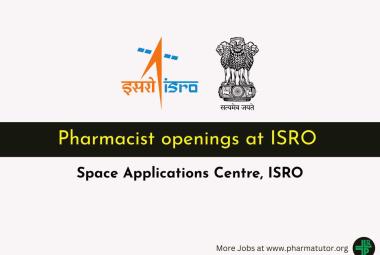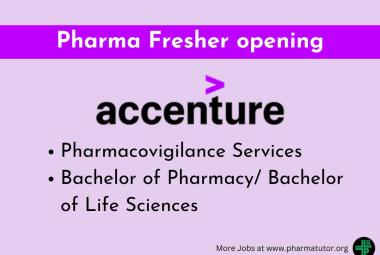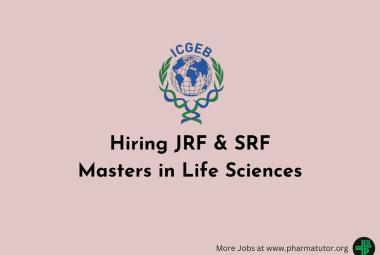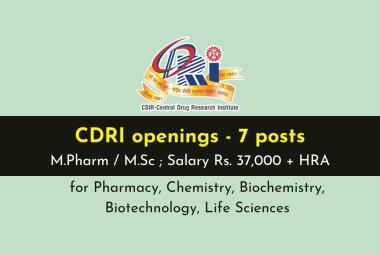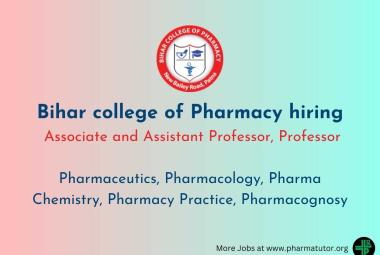{ DOWNLOAD AS PDF }
 ABOUT AUTHORS:
ABOUT AUTHORS:
Asha Kesari*, Pushpa Kumari Mahto, Shankheswari Kishan, Suranjeeta Singh
Department of Pharmaceutics,
Kanak Manjari Institute of Pharmaceutical Sciences,
Rourkela, Odisha
ashakeshri@yahoo.co.in
ABSTRACT
Hypertension or high blood pressure is a chronic medical condition in which the arterial blood pressure is elevated (normal blood pressure is 120/80 mm Hg). High Blood Pressure may lead to heart failure, stroke, coronary heart disease, kidney failure etc and may affect lungs, brain and heart. It is an important global problem and a very good percentage of people all over the world are affected by blood pressure. As there is no definite cure for this condition, hence controlling it is a big challenge. The main focus on BP management is to lower the elevated blood pressure and to prevent or reduce target organ damage. Although various antihypertensive drugs are available, they are usually associated with many sides –effects. The following article deals with the alternative measures used for lowering high blood pressure giving more importance on the various herbal drugs to be used as combination therapy.
[adsense:336x280:8701650588]
REFERENCE ID: PHARMATUTOR-ART-2294
|
PharmaTutor (ISSN: 2347 - 7881) Volume 2, Issue 12 How to cite this article: A Kesari, PK Mahto, S Kishan, S Singh; Herbal Anti Hypertension Drugs; PharmaTutor; 2014; 2(12); 49-61 |
INTRODUCTION
Hypertension refers to the prolonged and persistent elevation of blood pressure above the normal range. If not treated properly, hypertension can cause severe complications such as stroke, coronary heart disease and kidney failure.
Patients with hypertension must take antihypertensive drugs on a long-term basis. Although such drugs cannot give a radical cure, they can prevent heart failure, kidney failure and acute stroke induced by hypertension and delay the development of atherosclerosis by controlling the blood.(1)
Hypertension or high blood pressure is often called the” Silent killer”. “Silent” because it does not produce any significant recognizable symptoms and “killer” because even slightly high blood pressure can increase the risk of heart disease significantly.(2)
RISK FACTORS IN HYPERTENSIVE PATIENTS (3)
1. Smoking
2. Age (women older than 65 years and men older than 55 years of the age)
3. Diabetes
4. Dyslipidemia(↑LDL, ↓HDL, ↑TG)
5. Microalbuminuria or g.f.r < 60 ml/min
6. Family history of cardiovascular disease
7. Sex (men and postmenopausal women)
8. Obesity
[adsense:468x15:2204050025]
PHARMACOLOGY OF ANTIHYPERTENSIVE AGENT (4)
Hypertension: systolic BP ≥140mmHg and/or diastolic≥90mmHg
Classification of hypertension for adults:
|
CATEGORY |
SYSTOLIC(mmHg) |
|
DIASTOLIC(mmHg) |
|
|
Optimal BP |
<120 |
AND |
<80 |
|
|
Normal BP |
<130 |
AND |
<85 |
|
|
High-normal BP |
130-139 |
OR |
85-89 |
|
|
Stage1(mild) |
140-159 |
OR |
90-99 |
|
|
Stage2(moderate) |
160-179 |
OR |
100-109 |
|
|
Stage3 (severe) |
≥180 |
OR |
≥110 |
|
DRUG TREATMENT FOR HYPERTENSION – FACTOR TO CONSIDER
1. Primary (essential hypertension) vs. secondary (10-15% patients
E.g-pheochromocytoma, renal artery constriction, Cushing’s syndrome
2. Diagnosis (based on separate office visits) and severity of hypertension
3. Individualization (age, gender, ethnicity) and patient compliance.
4. Pre-existing risk factors and medical conditions Smoking, hyperlipidmia, diabetes, CHF, asthma, current medication….
5. Single –drug therapy (mono therapy) vs. multiple drug therapy (poly pharmacy)
PRIMARY HYPERTENSION (ESSENTIAL HYPERTENSION)(5)
Essential hypertension is the most prevalent type of hypertension, affecting 90 to 95% of hypertensive patients. Although no direct cause has identified itself, there are many factors such as sedentary life, stress, visceral obesity, potassium deficiency, alcohol intake, and vitamin D deficiency that increase the risk of developing hypertension.
Risk also increases with aging, some inherited genetic mutations, and having a family history of hypertension. An elevation of renin, an enzyme secreted by the kidney, is another risk factor, as is sympathetic nervous system over activity.
Consuming foods that contain high fructose cron syrup may increase one’s risk of developing hypertension.
SECONDARY HYPERTENSION
This type is important to recognize since it is treated differently than essential hypertension, by treating the underlying cause of elevated BP. Hypertension results compromise or imbalance of pathophysiological mechanisms, such as the hormone regulating endocrine system, that regulate blood plasma volume and heart function.Some are common and well- recognized secondary causes such as Cushing’s syndrome, which is a condition where the adrenal glands overproduce the hormone cortisol.
MALIGNANT HYPERTENSION (6)
The term hypertensive emergency is primarily used as a specific term for a hypertensive crisis with a diastolic blood pressure greater than or equal to 120 mmHg and/ or systolic blood pressure greater than or equal to 180mmHg.Hypertensive emergency differs from hypertensive crisis in that, in the former,there is evidence of acute organ damage.
A hypertensive emergency (formerly called “malignant hypertension”) is hypertension (high blood pressure)with acute impairment of one or more organ systems(especially the CNS, cardiovascular system and/or the renal system) that can result in irreversible organ damage. In a hypertensive emergency, the blood pressure should be slowly lowered over a period of minutes to hours with an antihypertensive agent.
PATHOPHYSIOLOGY (5)
The following three theories have been proposed to explain this:
1. Inability of the kidneys to excrete sodium, resulting in natriuretic factors such as atrial natriuretic factor being secreted to promote salt excretion with the side effect of raising TPR.
2. An overactive renin-angiotensin system leads to vasoconstriction and retention of sodium and water .The increase in blood volume leads to hypertension.
3. An overactive sympathetic nervous system, leading to increases stress responses.
It is also known that hypertension is highly heritable and Polygenic (caused by more than one gene) and a few candidates Genes have been postulated in the etiology of this condition.
HTN is a major independent risk factor for coronary artery disease, stroke, and kidney failure. Each increase of 20mmHg in systolic BP and 10mmHg in diasystolicBP, over the range of 115/75 to185/115 mmHg, doubles the risk of a fatal coronary event.
PRINCIPLE OF ANTIHYPERTENSION DRUGS (7)
Classes of antihypertension drugs
• Aldosterone receptors antagonists (blockers)
• Angiotensin II antagonists
• Angiotensin- converting enzyme inhibitor
• Alpha1 selective
• Non-selective
• Beta- blockers
• Beta-I/Beta-2
• Beta-1 predominant
• Alpha/Beta
• Intrinsic sympathomimtic activity
• Calcium channel antagonists
• non dihydropyridine
• Dihydropyridine
• Central Alpha2 agonists
• Direct renin inhibitors
• Direct vasodilators
• Diuretics
• Thiazide-type
• Loop-type
• Potassium –sparing
• Ganglionic blockers
COMMON HYPERTENSION DRUGS (8)
|
CLASS |
TRADE NAME |
GENERIC NAME |
SIDE EFFECTS |
SPECIAL MEASURES |
|
AngiotensinII Receptors Blockers (ARBs)
|
Atacand Atacand HCT Avalide Avapro Benicar Benicar HCT Cozaar Diovan Diovan HCT Exforge Hyzaar Micardis Micardis HCT Teveten Teveten HCT |
candesartan candesartan+HCT irbesartan+HCT irbesartan olmesartan olmesartan+HCT losartan valsartan valsartan+HCT valsartan+amlodipine losartan+HCT telmisartan telmisartan+HCT eprosartan eprosartan+HCT |
1.Dizziness, Lightheadededness Or faintness upon Rising 2. Physical problems: Muscle cramps or weakness, back or legs pain, insomnia, irregular heartbeat or rapid or slow heartbeat. 3.Confusion 4.Severe vomiting or diarrhea 5.Cough |
ARBs can be taken on an empty or full stomach. Monitor B/P,CBC,electrolytes and renal function Fall risk precaution especially early in therapy |
|
INDICATIONS |
||||
|
Hypertension, alone or in combination with other antihypertensive drugs Nephropathy in type IIdiabetes mellitus Heart failure in combination with ACE inhibitor Reduce the risk of stroke |
|
CLASS |
TRADE NAME |
GENERIC NAME |
SIDE EFFCT |
SPECIAL MEASURE |
|
AngiotensinConverting Enzyme Inhibitors (ACEIs) |
Accupril Accuretic Aceon Altace Capoten Capozide Lexxel Lotensin Lotensin HCT Mavik Monopril Monopril HCT Prinivil Prinzide Taka Teczem Uniretic Univasc Vaseretic Vasotec Zestoretic Zestril |
Quinapril Quinapril/HCT Perindopril Ramipril Captopril Captopril/HCT Enalipril/felodipine benazepril benazepril/HCT trandolapril fosinopril fosinopril/HCT lisinopril lisinopril/HCT trandolapril/verapamil enalapril/diltiazem moexipril/HCT moexipril enalapril/HCT enalaprilat lisinopril/HCT lisinopril |
1.Cough 2.Red,itchy,skin rash 3.Dizziness, Lightheadedness, Or faintness upon rising 4. Physical symptoms: sore throat, fever, mouth sores, chest pain, and swelling of feet, ankles and lower legs. 5. Swelling of the neck, face, and tongue. 6.High potassium levels 7.Kidney failure 8. Severe vomiting or diarrhoea. |
Take on an empty stomach one hour before meals. Do not use salt substitutes while taking ACE inhibitors. Avoid NSAIDs like Aleve andMortin. Fall risk precautions especially early in therapy. Do not interrupt therapy without a MD order. |
|
INDICATIONS |
||||
|
Hypertension, alone or in combination with other antihypertensive drugs. Congestive heart failure in conjunction with diuretics. Diabetes neuropathy. Hypertension in the presence of kidney disease. |
NOW YOU CAN ALSO PUBLISH YOUR ARTICLE ONLINE.
SUBMIT YOUR ARTICLE/PROJECT AT editor-in-chief@pharmatutor.org
Subscribe to Pharmatutor Alerts by Email
FIND OUT MORE ARTICLES AT OUR DATABASE
|
CLASS |
TRADE NAME |
GENERIC NAME |
SIDE EFFCETS |
SPECIAL MEASURES |
|
Beta Blockers |
Blocadren Brevibloc Bystolic Cartrol Coreg Corgard Corzide
Inderal Inderide Inno-PranXL Kerlone Normodyne Levatol Lopressor Lopressor HCT Sectral Tenoretic Tenormin Timolide Toprol Trandate Visken Zebeta Ziac |
timolol esmolol nebivolol carteolol carvediol nadolol nadolol/ bendroflumethiazide propanolol propanolol+HCT propanolol betaxolol labetaol penbutolol metoprolol metoprolol+HCT acebutolol atenolol/chlrothalidone atenolol timolol+HCT metaprolol labetalol pindolol bisoprolol bisoprolol/HCT |
1.Dizzness or lightheadedness 2.Slepping problems and drowsiness 3.Fatigue 4.Cold hands and feet 5.Slow heartbeat 6.Edema(swelling in ankles,feet,or legs) 7.Troublebreathing, Especially asthma symptoms 8.Depression |
Monitor pulse, report if<60/min.
MonitorB/P
Contraindicated with asthma or emphysema, extremely low blood pressure, heart block, or bradycardia
Take with meal or right after meals
DRUG INTERACTIONS Allergy or cold medications including over-the-counter products.
Diabetes medicines,including insulin
Other antihypertensive medication
|
|
INDICATIONS
|
||||
|
Hypertension Angina pectoris Myocardio infarction Migraine Congestive heart failure |
|
CLASS |
TRADE NAME |
GENERIC NAME |
SIDE EFFECT |
SPECIAL MEASURES |
|
Calcium Channel Blockers: |
Adalat Azor Cardene Cleviprex Dynacirc Exforge Lexxel Lotrel Nimotop Norvasc Plendil Procardia Sular Calan Cardizem Covera Dilacor Diltia Isoptin Tarka Teczem Tiamate Tiazac Vasocor Verelen |
nifedipine amlodipine/olmesartan nicardipine clevidipine isradipine amlodipine/valsartan felodipine/enalapril amlodipine/benazepril nimodipine amlodipine felodipine nifedipine nisoldipine verapamil diltiazem verampril diltiazem diltiazem verampril verampril/trandolapril diltiazem/enalapril diltiazem diltiazem bepridil verampril |
1.Dizzness or lightheadedness 2.Hypotension 3.Heart rhythm Problems 4.Dry mouth 5. Edema of ankles, feet, or lower legs. 6.Headache 7.Nausea 8.Fatigue 9.Skin rash 10.Constipation or Diarrhoea
|
Take with food or milk.
Monitor pulse and B/P.
No alcohol interferes With the effects Of the drug and Increases the side effects.
Other blood pressure medication in combination With a calcium channel blocker may cause a sudden drop in blood pressure.
|
|
INDICATIONS |
||||
|
Angina Pectoris
Hypertension
Subarachnoid hemorrhage
Atrial fibrillation/flutter
|
|
CLASS |
TRADE NAME |
GENERIC NAME |
SIDE EFFECTS |
SPECIAL MEASURES |
|
Alpha-I-Adrenergic Blockers Agents |
Cardura Dibenzyline Esimil Hylorel Hytrin Ismelin Minipress Minizide Regitine |
doxazosin phenoxybenzamine guanethidine+HCT guanadrel terazosin guanethidine prazosin prazosin+polythiazide phentolamine
|
1.sudden hypotension and syncope 2. Angina, arrhythmia 3.Nausea,andVomitting Dry mouth 4.Diarrhoea constipation and Abdominal pain 5.Depression ,anxiety and nervousness 6.Joint pain 7.Dyspnea,sinusitis,cough 8.Edema,weight gain 9.Urinary frequency 10.Drowsiness |
Administer at bed time to minimize fainting
Monitor for angina,B/P
Take with milk/meals to avoid GI upset
Avoid OTCcold medications
|
|
INDICATIONS
|
||||
|
Hypertension,alone Or in combination With other antihypertensive drugs
BPH for doxazosin, terazosin
|
|
CLASS |
TRADE NAME |
GENERIC NAME |
SIDE EFFECTS |
SPECIAL MEASURES |
|
Alpha-II Agonists and Other Centrally Acting |



